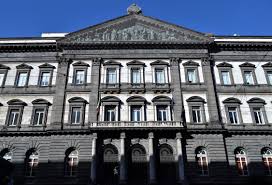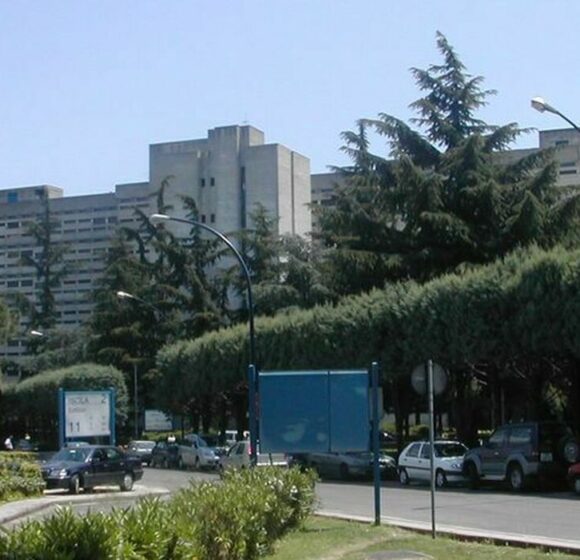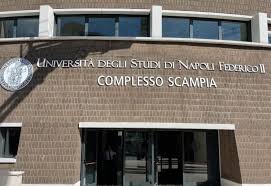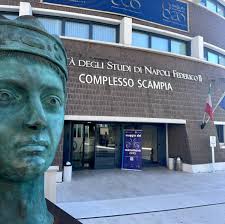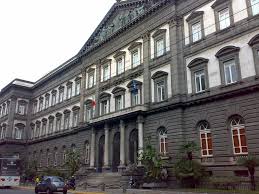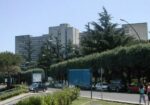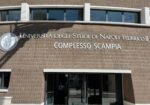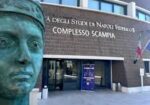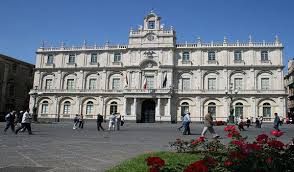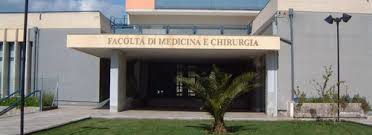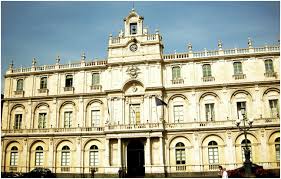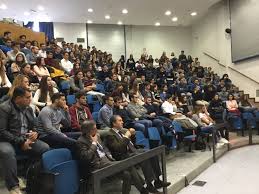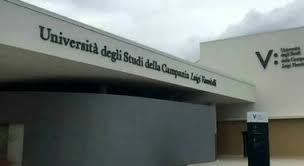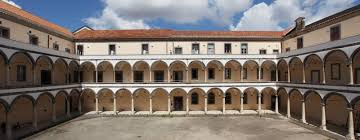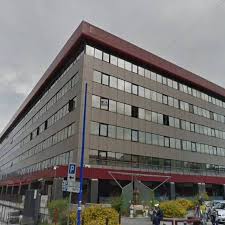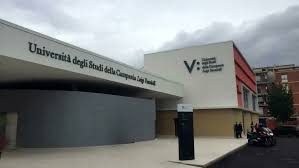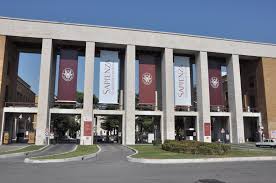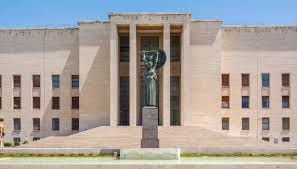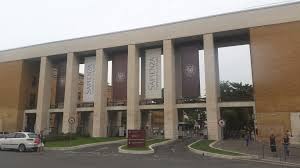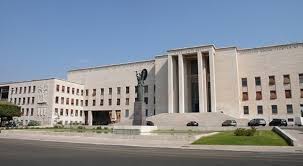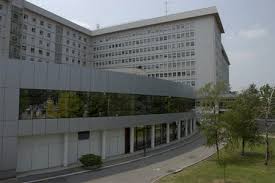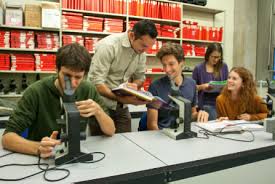Università degli Studi di Napoli Federico II Scuola di Medicina e Chirurgia The University of Naples Federico II was extraordinarily resilient during the chaotic years of World War II. Though it was regularly bombarded, the university itself did not suffer extensive structural damage. After the armistice on September 8, 1943, however, the city of Naples was transformed into a battleground as insurgent Neapolitans launched guerrilla warfare against the withdrawing German troops. In retaliation, the German military personnel burned down some university buildings, resulting in extensive damage.
About Università degli Studi di Napoli Federico II Scuola di Medicina e Chirurgia
After this trying time, certain of the university’s buildings were briefly taken over by Anglo-American troops that had occupied Naples. It wasn’t until the post-war years, especially in the 1950s and 1960s, that the university entered a period of massive growth. It was during this period that whole schools were transferred to newly developed zones, including Fuorigrotta, located on the city’s northwestern edge. The biggest expansion was the building of a new academic complex on Camaldoli Hill, which offered cutting-edge facilities to the School of Engineering. Today, a considerable portion of the Medical School is also based in this location, and it offers the students a contemporary and well-equipped learning environment.
Università degli Studi di Napoli Federico II Scuola di Medicina e Chirurgia – Table of Contents
- About
- Advantages
- Ranking
- Departments And Course Duration
- Facilities And Infrastructure
- Required Documents
- Eligibility Criteria
- Admission Process
- Benefits
- Privileges and Benefits for Indian Students
- FAQ’s
Since the early 2000s, the university has kept growing, bringing new, state-of-the-art facilities to support the increasing academic requirements of students and researchers. Perhaps the most significant addition has been the establishment of the Monte Sant’Angelo Complex, a huge educational center in Fuorigrotta. This sophisticated complex houses some of the most important academic disciplines, including Mathematics, Physics, Natural Sciences, Biotechnological Sciences, and Economics.
In spite of the creation of new universities all over southern Italy and in Campania as well, students at the University of Naples Federico II just kept growing up during the 1970s and early 1980s. Its numbers peaked above 100,000, cementing its position among the biggest and most esteemed teaching institutions in Italy.

Nowadays, the university is organized into four key schools and hosts twenty-six specialist departments, touching on a diverse array of areas. The organization has a qualified academic body that consists of over 3,000 professors and researchers and a supporting administrative force of over 4,500 staff. Remaining true to its tradition of quality, the university continues to support around 100,000 students, promoting scholarship innovation, research, and culture development at global levels.
Advantages of Studying at Università degli Studi di Napoli Federico II Scuola di Medicina e Chirurgia
Long Tradition
- Established in 1224, it is one of Europe’s oldest universities, renowned for its rich history and academic excellence.
Diverse Programs
- Offers a wide range of courses, including Medicine, Engineering, and Social Sciences.
- Several programs are taught in English, making it accessible to international students.
Research Focus
- Home to numerous research centers and strong collaborations with leading global universities and companies.
Strong Medical Program
- The Faculty of Medicine and Surgery provides a comprehensive education, integrating basic and clinical sciences to prepare students for medical practice.
Global Perspective
- A diverse student body fosters cross-cultural interaction, enhancing global exposure and networking opportunities.
Career Guidance
- Provides career counseling and guidance to assist students in securing internships and job opportunities after graduation.
Mandatory Attendance
- While attendance is compulsory, the degree of enforcement varies depending on the university policies and individual professors.
Hands-on Clinical Training
- Medical students receive practical training at Cardarelli Hospital in Naples, gaining real-world clinical experience.
Università degli Studi di Napoli Federico II Scuola di Medicina e Chirurgia Ranking
The Università degli Studi di Napoli Federico II, one of the oldest and largest universities in the world, warmly welcomes students to its vibrant academic community.
The university is committed to offering high-quality education and research training, striving to integrate teaching excellence with the warm and friendly Neapolitan atmosphere. With a rich history spanning nearly eight centuries, the institution continues to evolve, adapting to the ever-changing demands of the modern world while maintaining its academic prestige.
The university is dedicated to training competent, open-minded professionals who are well-equipped to meet the dynamic challenges of global society. It strongly believes that knowledge is the most rewarding achievement for mankind and actively pursues academic and research excellence by continuously reassessing and improving its standards.
Despite the challenges, the university embraces them with determination, knowing that greater challenges lead to greater rewards. It fosters a stimulating intellectual environment, ideal for world-class research and professional training. Coupled with the rich cultural heritage and unique charm of Naples, studying at Federico II promises to be a truly rewarding and unforgettable experience.
Departments And Course Duration in Università degli Studi di Napoli Federico II Scuola di Medicina e Chirurgia
The Università degli Studi di Napoli Federico II – Scuola di Medicina e Chirurgia (Federico II University of Naples – School of Medicine and Surgery) is one of the oldest and most prestigious medical schools in Italy, founded in 1224. It offers a Bachelor of Medicine and Bachelor of Surgery (MBBS equivalent) program, known in Italy as “Corso di Laurea Magistrale a Ciclo Unico in Medicina e Chirurgia” (Single-Cycle Master’s Degree in Medicine and Surgery).
Course Duration
- Taught in Italian (some courses may have English components, but fluency in Italian is required for clinical training).
- Includes theoretical studies, laboratory work, and clinical rotations in affiliated hospitals.
Departments And Subjects
The medical program is structured into pre-clinical and clinical phases.
Pre-Clinical Phase
- Basic Medical Sciences
- Human Anatomy
- Histology & Embryology
- Biochemistry
- Physiology
- Medical Physics
- Foundations of Medicine
- Molecular Biology & Genetics
- Immunology
- Microbiology & Virology
- Pathology (General Pathology, Pathophysiology)
- Early Clinical Exposure
- Medical Semiotics (Introduction to Clinical Examination)
- Medical Terminology
- Basics of Pharmacology
Clinical Phase
- Core Clinical Disciplines
- Internal Medicine
- General Surgery
- Pediatrics
- Obstetrics & Gynecology
- Neurology & Psychiatry
- Radiology & Diagnostic Imaging
- Specialized Medicine
- Cardiology
- Dermatology
- Orthopedics & Traumatology
- Ophthalmology
- Otorhinolaryngology (ENT)
- Infectious Diseases
- Community & Preventive Medicine
- Public Health & Epidemiology
- Forensic Medicine
- Occupational Medicine
- Clinical Rotations & Electives
- Hands-on training in affiliated hospitals (e.g., Azienda Ospedaliera Universitaria Federico II)
- Elective periods in subspecialties (e.g., Oncology, Emergency Medicine)
Final Examination & Licensing
- Final State Exam (Esame di Stato) – Required to practice medicine in Italy.
- EU Recognition – The degree allows practice within the EU; non-EU graduates may need additional exams (e.g., USMLE for the USA, PLAB for the UK).
Admission Requirements
- Entrance Exam (IMAT, if applying via international quota) or Italian-language test.
- High school diploma (with strong science background).
- Italian language proficiency (B2/C1 level for non-native speakers).
Affiliated Hospitals for Clinical Training
- Azienda Ospedaliera Universitaria Federico II
- Cardarelli Hospital (one of the largest in southern Italy)
- Santobono Pediatric Hospital
Facilities And Infrastructure at Università degli Studi di Napoli Federico II Scuola di Medicina e Chirurgia
The Università degli Studi di Napoli Federico II provides cutting-edge facilities and infrastructure to facilitate medical education, research, and student life. Through state-of-the-art laboratories, excellently equipped hospitals, and ample academic resources, the university provides an extensive learning environment for future medical professionals
1. Campus & Academic Buildings
- The Medical School is situated in Fuorigrotta and Camaldoli Hill, with state-of-the-art classrooms, auditoriums, and research institutes.
- The Monte Sant’Angelo Complex has other facilities for biomedical sciences and inter-disciplinary studies.
- Audio-visual facilities are available in lecture halls and seminar rooms for interactive learning.
2. Libraries & Study Resources
- The Medical Library offers access to thousands of medical books, journals, research articles, and electronic databases.
- E-learning portals and online study materials enable students to study at any time.
- Quiet reading areas and group study spaces are provided for concentrated study.
3. Research Laboratories & Centers
- The university has well-equipped research labs for biomedical sciences, molecular medicine, and medical biotechnology.
- Anatomy, pathology, microbiology, and pharmacology have specialized labs that provide experiential learning in the form of simulations and experiments.
- Partnership with international research centers enables students to contribute to pioneering medical research.
4. Clinical Training & Teaching Hospitals
- Practical training is imparted at Cardarelli Hospital, which is Italy’s one of the biggest hospitals, and other group hospitals.
- Practical skills are developed in the university’s clinical simulation laboratories prior to exposure to actual patients.
- Clinical Medicine and Surgery departments provide access to operating suites, diagnostic laboratories, and intensive care units.
5. Student Accommodation & Housing
- On-campus and off-campus student hostels provide cozy accommodations, with single and shared room options.
- Inexpensive housing is available in Naples, with convenient proximity to the university.
6. Sports & Extracurricular Facilities
- The university encourages physical fitness and sports through its gymnasiums, sports centers, and recreation clubs.
- Different student organizations, cultural clubs, and academic societies offer scope for personal growth and networking.
7. Cafeteria & Dining Facilities
- The university cafes and canteens provide low-cost and varied meals, targeting international students
- Several restaurants and eateries close to the campus ensure access to traditional Italian food.
8. Student Support Services
- The SINAPSI Center offers assistance to students with disabilities and learning disabilities, promoting inclusive education.
- Career guidance, job placement, and internship schemes assist students in their professional medical careers.
International student services aid in visa formalities, accommodation, and cultural integration.
With state-of-the-art facilities, world-class medical education, and complete support for students, Università degli Studi di Napoli Federico II – Scuola di Medicina e Chirurgia is an ideal setting for medical education. The university harmonizes tradition with innovation and stands as the prime preference for prospective doctors and medical researchers around the globe.
Official site For Università degli Studi di Napoli Federico II Scuola di Medicina e Chirurgia: Click Here
Required Documents For Admission in Università degli Studi di Napoli Federico II Scuola di Medicina e Chirurgia
- A birth certificate as an age proof is mandatory.
- 10th and 12th class mark sheets.
- Passport size photo.
- Valid passport with 18 months of validity.
- Student VISA is mandatory.
- Report of HIV test.
- Bank statements are required for the submission.
- Medical certificates for fitness proofs.
- Invitation letter from concerned university.
- Approved documents from the Ministry External Affairs.
- Legalized papers from the embassy of Italy.
Eligibility Criteria For Università degli Studi di Napoli Federico II Scuola di Medicina e Chirurgia
- Age: The student should be at least 17 years old
- Academic Qualification: Students must have completed their secondary education or equivalent from a recognized board with Physics, Chemistry, and Biology as mandatory subjects.
- Language Proficiency: International students must be proficient in the Italian language as it is the language of instruction for the MBBS program in Italy.
- Entrance Exam: Students must clear the entrance exam conducted by the respective university.
- Health Checkup: International students must pass a medical examination to ensure they are fit to pursue MBBS studies
Admission Process For Università degli Studi di Napoli Federico II Scuola di Medicina e Chirurgia
- Online Application: Fill out the application form and submit the required documents online.
- Fee Payment: Once the university reviews and approves the application, pay the required fees.
- Immigration Process: The university initiates the immigration process and issues an invitation letter after receiving the ministry order.
- Visa Approval: The visa approval process takes around 30 days.
- Travel to Italy: After receiving the student visa, students can finalize their travel plans and prepare for departure.
Get More Details About The Colleges in Ireland: Click Here
Benefits of Studying at Università degli Studi di Napoli Federico II Scuola di Medicina e Chirurgia
The Università degli Studi di Napoli Federico II – Scuola di Medicina e Chirurgia is one of the most prestigious medical schools in Italy, offering world-class education, research opportunities, and excellent clinical training.
1. Long-Standing Academic Excellence
- Established in 1224, it is one of Europe’s oldest and most respected universities, with a rich history in medical education.
- The university is globally recognized for its high academic standards and renowned faculty members.
2. Strong Medical Program & Research Opportunities
- The Faculty of Medicine and Surgery offers a comprehensive MBBS program that integrates theoretical learning with hands-on clinical training.
- The university collaborates with leading research centers and international institutions, providing students with opportunities to engage in cutting-edge medical research.
3. Advanced Clinical Training
- Students gain practical experience at Cardarelli Hospital, one of Italy’s largest hospitals, along with other top-tier affiliated medical centers.
- Access to state-of-the-art simulation labs allows students to develop their clinical and surgical skills before working with real patients.
4. International Recognition & Global Exposure
- The medical degrees from Federico II are globally recognized, allowing graduates to practice medicine in various countries after meeting local licensing requirements.
- The university has collaborations with 264 partner institutions worldwide, offering exchange programs, international research opportunities, and dual-degree options.
5. Affordable Education & Living Costs
- Compared to other Western European medical universities, Federico II offers affordable tuition fees, making it a cost-effective choice for international students.
- Naples is more affordable than cities like Rome or Milan, providing budget-friendly housing, food, and transportation.
6. Vibrant Student Life & Multicultural Environment
- Located in Naples, a UNESCO World Heritage Site, students can immerse themselves in a rich cultural and historical atmosphere.
- The university attracts students from diverse backgrounds, fostering a global learning environment and encouraging cross-cultural interactions.
7. Career Support & Professional Development
- The university provides career guidance services, helping students secure internships, research projects, and job placements after graduation.
- Strong connections with hospitals, healthcare institutions, and research centers enhance career prospects for graduates.
8. Supportive Learning Environment
- Compared to other English-taught medical universities in Italy, Federico II is known for closer student-teacher interaction.
- The SINAPSI center offers student support services, ensuring inclusivity and assistance for students with disabilities or learning difficulties.
9. Easy Access to Italy & Europe
- Naples serves as a gateway to major Italian cities and Mediterranean countries, making travel, networking, and professional opportunities easily accessible.
- The city’s transportation system provides convenient access to other parts of Italy and Europe.
The Università degli Studi di Napoli Federico II – Scuola di Medicina e Chirurgia combines centuries of academic excellence, world-class medical training, and a dynamic student life. With its high-quality education, strong clinical exposure, and international opportunities, it stands as an excellent choice for aspiring medical professionals worldwide.
Privileges and Benefits for Indian Students at Università degli Studi di Napoli Federico II Scuola di Medicina e Chirurgia
Indian students pursuing MBBS at Università degli Studi di Napoli Federico II – Scuola di Medicina e Chirurgia enjoy several benefits, including quality education, affordability, and a supportive learning environment.
1. Affordable Education & Cost-Effective Living
- Lower Tuition Fees: Compared to private medical colleges in India and Western European universities, Federico II offers a cost-effective MBBS program.
- Scholarship Opportunities: Indian students can apply for Italian government scholarships and regional financial aid programs, reducing the financial burden.
- Affordable Living Costs: Naples is more budget-friendly than cities like Rome or Milan, with reasonably priced accommodation, food, and public transport.
2. Globally Recognized MBBS Degree
- The medical degree from Federico II is recognized by the World Health Organization (WHO), Medical Council of India (MCI)/National Medical Commission (NMC), and other medical boards worldwide.
- Graduates are eligible to appear for exams like FMGE (Foreign Medical Graduate Examination), USMLE (United States Medical Licensing Examination), PLAB (UK), and others, allowing them to practice internationally.
3. High-Quality Medical Education & Research Opportunities
- The MBBS program follows the European standard, integrating theory, practical training, and research.
- Students gain hands-on clinical exposure at Cardarelli Hospital, one of Italy’s largest hospitals.
- The university has advanced research facilities and collaborations with top institutions worldwide.
5. English-Taught Programs & Support for International Students
- The university offers English-taught medical programs, eliminating the need for fluency in Italian (though learning basic Italian helps in clinical training).
- Dedicated international student offices help with visas, residence permits, and other administrative processes.
6. Student-Friendly Environment & Cultural Integration
- Naples has a growing Indian student community, making it easier to adjust to the new environment.
- The city offers Indian restaurants, grocery stores, and cultural associations, ensuring students feel at home.
- The university encourages student interaction, cultural exchange programs, and extracurricular activities.
7. Post-Graduation Opportunities & Career Support
- After completing MBBS, students can pursue post-graduation (MD/MS) in Italy, the UK, the USA, or other European countries.
- The university provides career guidance, internship placements, and networking opportunities to help students build their medical careers.
8. Easy Travel Access to India and Europe
- Direct flights and affordable connectivity make it easier for Indian students to travel between Naples and India.
- Naples serves as a gateway to other European countries, making travel for education, internships, and networking easier.
Studying at Università degli Studi di Napoli Federico II – Scuola di Medicina e Chirurgia offers Indian students a globally recognized degree, affordable education, high-quality medical training, and excellent career opportunities. With scholarships, research prospects, and a supportive international community, it is an ideal destination for Indian students aspiring to become world-class doctors.
FAQ’s
Is the MBBS degree from Federico recognized worldwide?
Yes, the MBBS degree is recognized by the World Health Organization (WHO), the Medical Council of India (MCI/NMC), and other global medical bodies. Graduates can appear for FMGE (India), USMLE (USA), PLAB (UK), and other medical licensing exams.
Where do students receive clinical training?
Students gain practical experience at Cardarelli Hospital, one of Italy’s largest and most advanced hospitals, offering extensive hands-on clinical exposure.
What is student life like at Federico II?
The university offers a diverse and vibrant campus environment, with a mix of international students, cultural exchange programs, student organizations, and extracurricular activities. Naples is a historic and affordable city, making student life enjoyable.
What kind of student support services are available?
- International Student Office: Assists with visa applications, residence permits, and university registration.
- SINAPSI (Student Support Services): Provides guidance for students with disabilities or temporary difficulties.
- Career Guidance Services: Helps students with job placements, internships, and career counseling.
What is the ranking of Università degli Studi di Napoli Federico II?
The university is one of the oldest and most prestigious institutions in Europe, consistently ranked among Italy’s top universities for medicine, research, and innovation.
Also Check:
